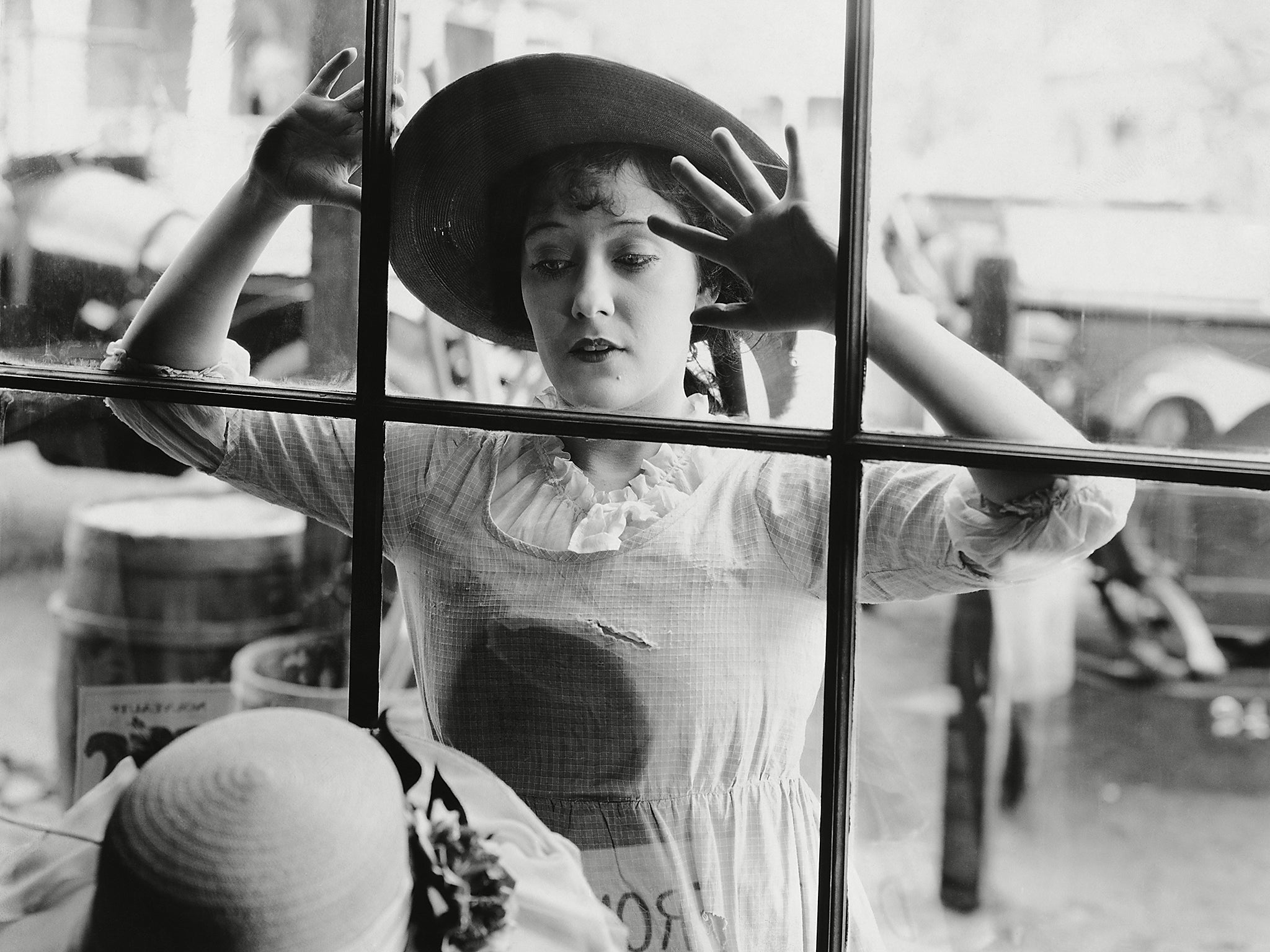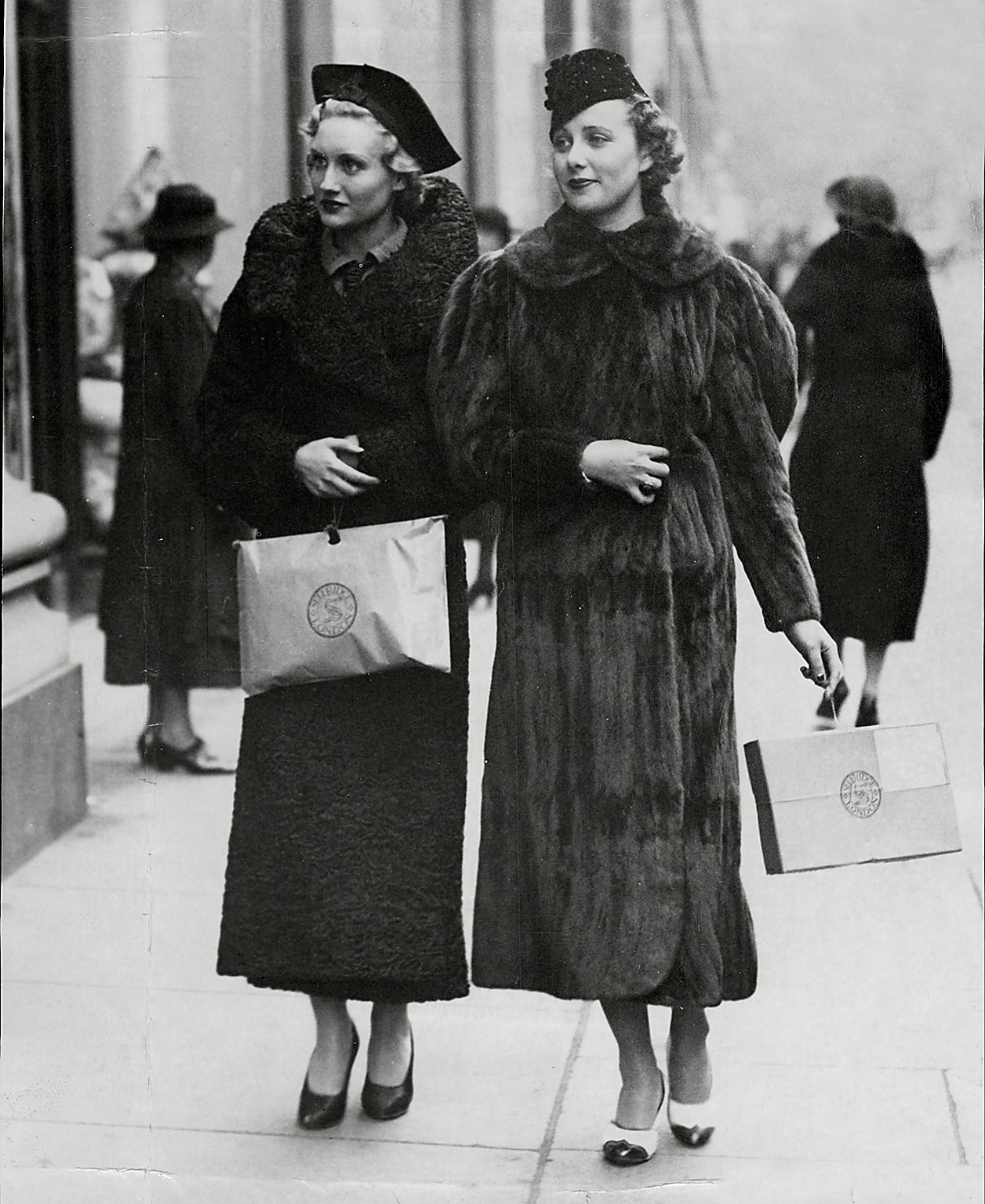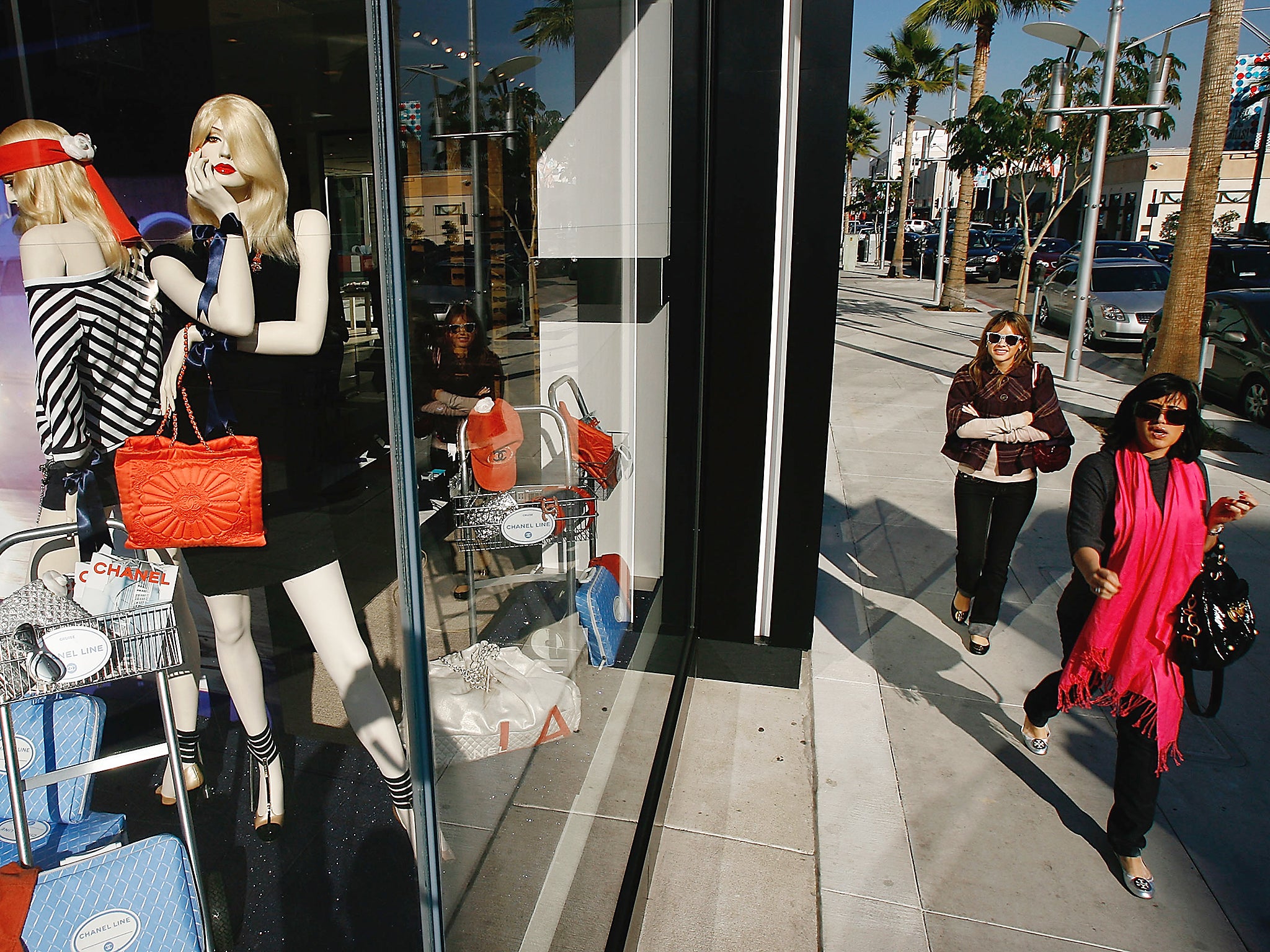The secret feminist history of shopping
With the ease of online shopping, malls are losing their popularity as a social activity. But for women in the 19th century, shopping was a radical act – and for many, a first taste of freedom, Jeff Guo says

Your support helps us to tell the story
From reproductive rights to climate change to Big Tech, The Independent is on the ground when the story is developing. Whether it's investigating the financials of Elon Musk's pro-Trump PAC or producing our latest documentary, 'The A Word', which shines a light on the American women fighting for reproductive rights, we know how important it is to parse out the facts from the messaging.
At such a critical moment in US history, we need reporters on the ground. Your donation allows us to keep sending journalists to speak to both sides of the story.
The Independent is trusted by Americans across the entire political spectrum. And unlike many other quality news outlets, we choose not to lock Americans out of our reporting and analysis with paywalls. We believe quality journalism should be available to everyone, paid for by those who can afford it.
Your support makes all the difference.For shopping malls, December was once the happiest time of the year. Now, each holiday season brings a painful reminder that shoppers have increasingly abandoned real-life shop fronts for virtual ones.
To get people off the couch, mall owners are trying to bring back the idea of shopping as a social activity. They are investing in free cocoa and “elfie selfie” stations, and have doubled down on the mall Santa, building him expensive hi-tech palaces decked out with “Naughty O’ Nice Meters” and “Elf-Ray Vision”. Even shops that have historically shunned these traditions, like Toys ’R Us, are now getting in the game.
It might be too late. The notion of strolling through a physical mall is starting to feel old-fashioned, like barbershop quartets or writing in cursive. This is how people used to buy things, before drone deliveries and the sundry triumphs of on-demand capitalism.
But once upon a time, shopping galleries were deeply radical spaces. In fact, it is impossible to tell the full story of women’s rights without talking about the rise of the mall and its predecessor, the shopping district. These places were crucial to the invention of shopping as an experience: as an act of leisure, as a way to spend an afternoon. And in doing so, they opened up modern cities to women and gave them areas where they, like men, could wander at will.
For many middle-class housewives in Victorian Britain, shopping was their first taste of real freedom, and the starting point for their push into public life, historian Erika Diane Rappaport explained. “During a period in which a family’s respectability and social position depended upon the idea that the middle-class wife and daughter remain apart from the market, politics, and public space, the female shopper was an especially disruptive figure,” she writes in her book Shopping For Pleasure.

Bazaars and markets are as old as civilisation, but the idea of ambling through shops, sipping drinks and admiring (but not necessarily buying) the merchandise – that is a thoroughly modern activity that first gained popularity in 1800s. And at the time, it was also a minor scandal.
As urban centres coalesced in the 19th century, they were primarily the domain of men. Cities were sites of politics and business. Women weren't entirely excluded, says historian Mica Nava, but their public presence was scarce. They could attend galleries and exhibitions with a male chaperone, for instance, and some shopping did exist, but primarily among wealthy ladies.
What changed in the 19th century was industrialisation and the manufacturing revolution, which churned out furniture, flatware, and clothing in dazzling volumes. The explosion in the variety and availability of affordable consumer goods meant that the growing middle class could suddenly buy things just for the joy of it. And the task of tastefully selecting among these luxury goods fell to the women.
Shopping gave middle-class women a foothold in the modern city, and for many, a new pastime. Soon, housewives started roaming the city under the pretence of buying things. By this new definition, “shopping” did not always involve an actual purchase. It was about the pleasures of perusing, taking in the sights, the displays, the people.
Not everyone was happy about the intrusion of women into urban life. Even in the late 1800s, many still looked down on females who walked the streets without a male chaperone. Newspaper columnists condemned their shopping habits as salacious acts of public consumerism. “Perhaps nothing was more revolting than the spectacle of a middle-class woman immersed in the filthy, fraudulent, and dangerous world of the urban marketplace,” Rappaport writes.
But urban retailers eagerly welcomed the women. They invented places like the department store, where women could shop comfortably, surrounded by amenities and in semi-private.
“By providing a reason – shopping – for women to appear unescorted in public, as well as arranging safe spaces like restrooms and tea rooms where women could gather or sit alone without fear of being molested by men … department stores also made it possible for women to leave the domestic space of the home and lay claim to the centre of the city,“ write sociologists Sharon Zukin and Jennifer Smith Maguire.

Slowly, the city reconfigured itself in response to the demands of shopping women. In the London of the early 1800s, suburban women day-trippers often had no place to eat lunch or even use the lavatory. But soon, Rappaport writes, protean feminists were pressuring the city government to instal public lavatories. Clubs and tea shops sprang up for women to have a bite to eat in between their shopping excursions.
With these social changes came new social ills. On both sides of the Atlantic, there was an outbreak of shoplifting. But since the perpetrators were typically well-to-do women, they were not thrown in jail, says historian Elaine Abelson. Doctors decided that this was a medical condition related to their uteruses, and invented the disease “kleptomania”.

This epidemic of petty middle-class crime made huge waves in popular culture, with songs and films about female shoplifters. The act of acquiring things was increasingly seen as its own pleasure, and many women blamed department stores for being temples of temptation.
By the early 1900s, London’s shopping scene also became a battleground for the women’s suffrage movement, who went on window-smashing raids against the same shops that relied on their business. The suffragettes took advantage of women’s newfound place in urban life, which allowed them for the first time to move freely in parts of the city. “Suddenly women who had a moment before appeared to be on peaceful shopping expeditions produced from bags or muffs, hammers, stones and sticks, and began an attack upon the nearest windows,” a Daily Telegraph article described.
Now a century later, this world of militant suffragettes and male chaperones sounds like an alien planet. We take for granted a lot of the changes that were set into motion when department stores gave women an excuse to take more and more excursions outside the home.
Shopping today is still partly perceived as a “girlie” activity. But at the time, shopping helped women assert themselves and assert their economic importance in a society that denied them a larger role in the public sphere. As Rappaport writes, “For women with few public activities and limited employment and educational options, shopping allowed them to occupy and construct urban space.” (Suburban malls served something of the same purpose for the boys and girls of the Eighties and Nineties.)
So let’s sidestep all of those French philosophers who have written so scathingly about consumption culture, except to concede that yes, we often buy things because it is fashionable, and yes, we often buy things that we don’t need. Our consumerist habits are not going away. They’re just moving online. What is disappearing is the shopping mall – and with it, the notion of shopping as a social activity.
© Washington Post
Join our commenting forum
Join thought-provoking conversations, follow other Independent readers and see their replies
Comments